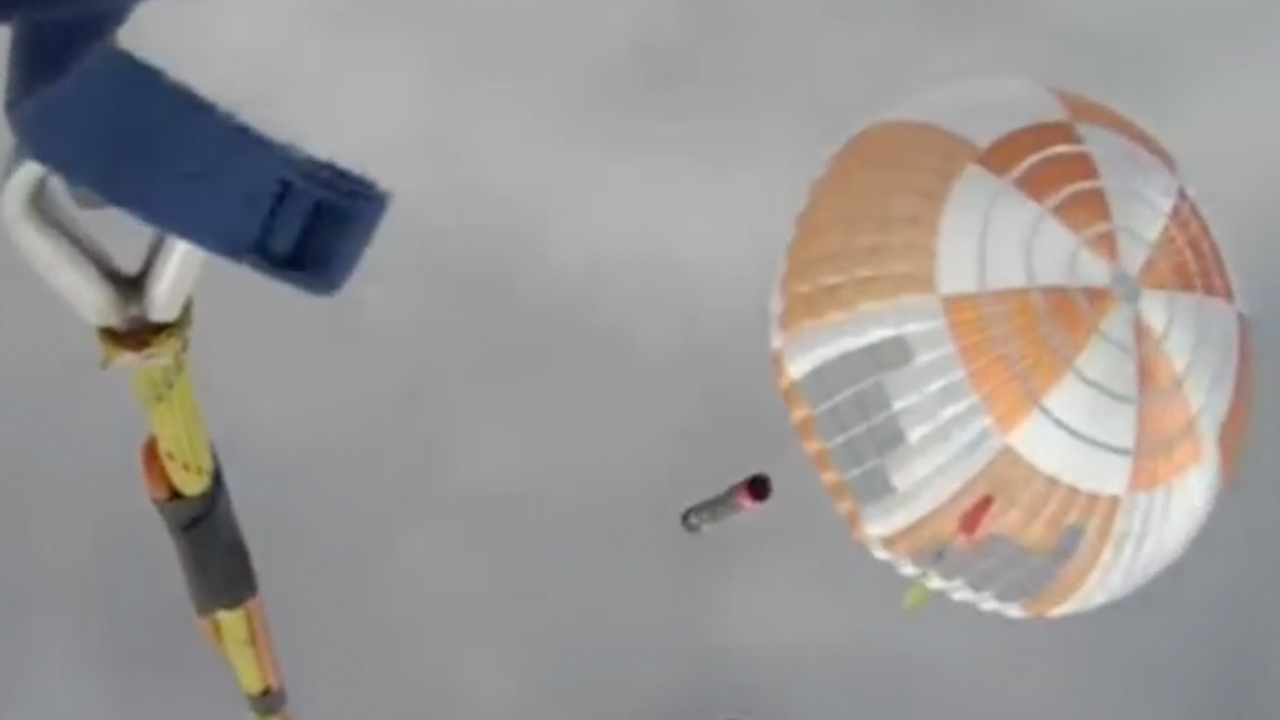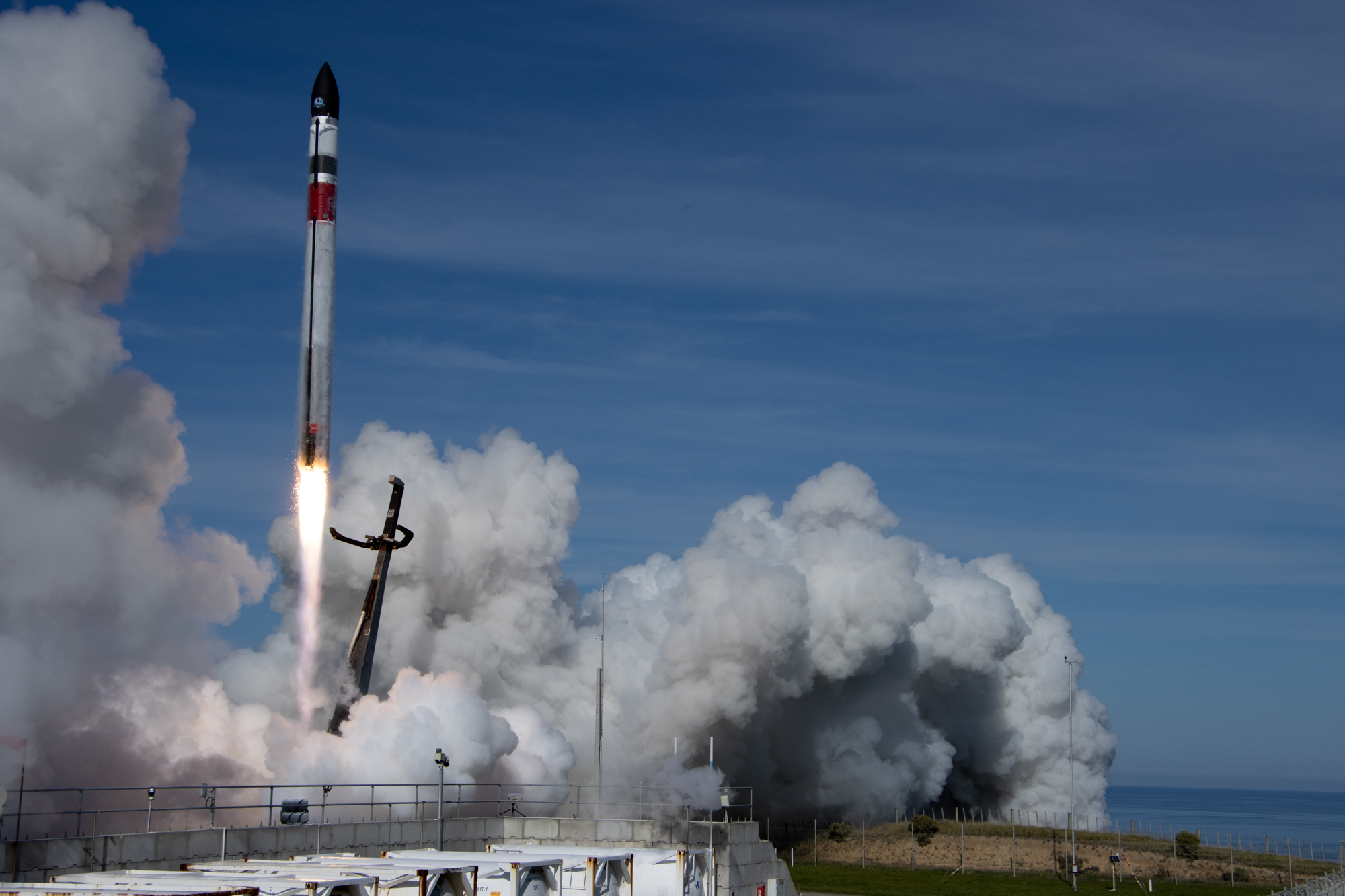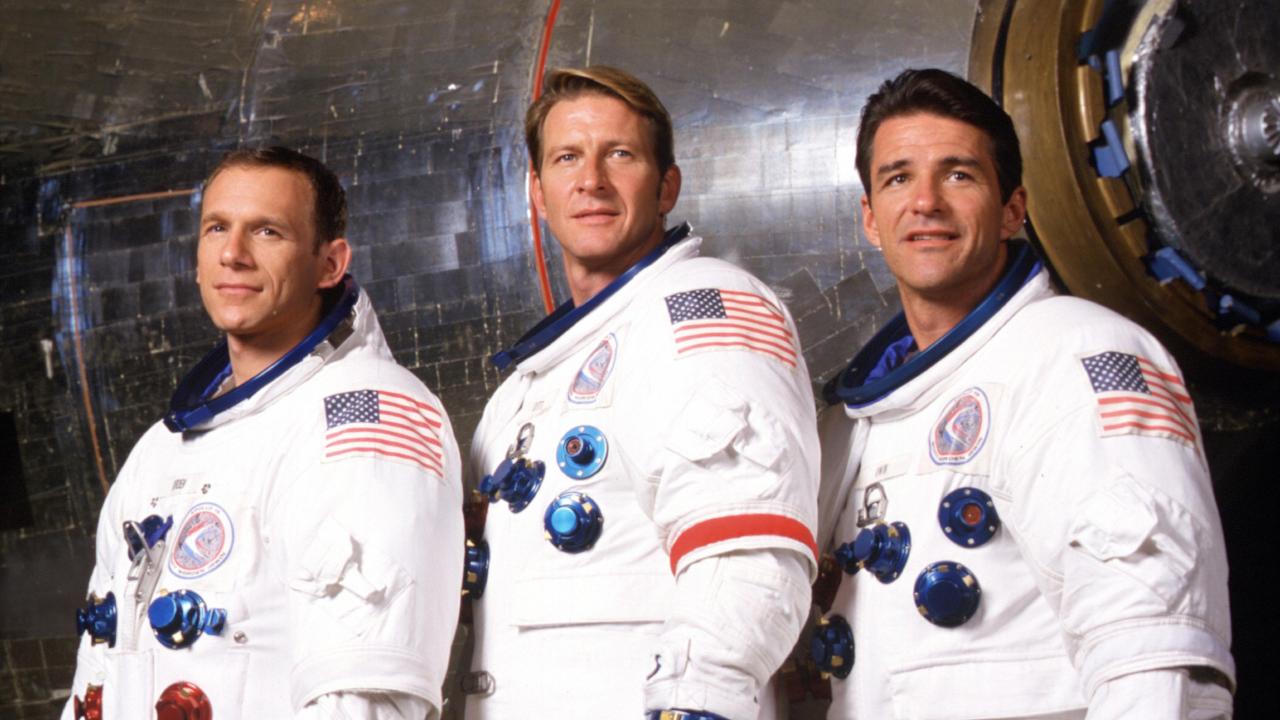Rocket Lab just did something we've never seen before.
Rocket Lab sent 34 satellites to orbit today (May 2) with its two-stage Electron launcher, which lifted off from the company's New Zealand site at 6:49 p.m. EDT (2249 GMT). Impressive enough, but it was the action in the downward direction that was unprecedented.
After sending the satellites on their way, the Electron's first stage came back down to Earth under parachutes. About 15 minutes after liftoff, as the booster glided toward the Pacific Ocean, a Sikorsky S-92 helicopter sidled up close to it and snagged the parachute line with a hook.
"Absolutely incredible stuff there!" Rocket Lab Senior Communications Advisor Murielle Baker said during today's launch webcast. "We have successfully caught that Electron booster underneath the parachute!"
Related: Rocket Lab and its Electron booster (photos)

The chopper pilots ended up releasing the booster "as they were not happy with the way it was flying, but no big deal, the rocket splashed down safely and the ship is loading it now," Rocket Lab founder and CEO Peter Beck said via Twitter. He was referring to the company's recovery ship, which will transport the booster back to terra firma for inspection and analysis.
Homeward bound, safe and sound. pic.twitter.com/j159KRKQb5May 3, 2022
This dramatic action is all part of Rocket Lab's effort to make Electron first stages reusable, an achievement that would reduce costs and increase launch frequency, company representatives have said.
Get the Space.com Newsletter
Breaking space news, the latest updates on rocket launches, skywatching events and more!
Space fans are already familiar with reusable rockets thanks to SpaceX, which commonly lands and reflies the first stages of its Falcon 9 rocket (as well as those of its Falcon Heavy, which has launched just three times to date). Falcon 9 first stages land propulsively, using engine burns to steer themselves to soft, vertical touchdowns on land or "droneship" platforms at sea.
But the 59-foot-tall (18 meters) Electron is too small to do that; the first-stage boosters cannot carry sufficient fuel to have enough left over for landing operations, Rocket Lab representatives have said. So the company settled on the helicopter-snag strategy.
Rocket Lab has been steadily building up to today's historic catch. The company recovered Electron first stages after soft ocean splashdowns on three recent missions, and it has caught falling dummy boosters with a helicopter during a series of drop tests.
Today's mission — the 26th overall for Rocket Lab and Electron — was delayed several times as Rocket Lab waited for weather to clear in the catch zone, which was about 170 miles (275 kilometers) off the New Zealand coast. The company has a history of giving its flights playful names, and it dubbed this one "There And Back Again."

The 34 satellites that flew on "There And Back Again" — more than on any previous Electron mission — were provided by a variety of customers, including Alba Orbital, Astrix Astronautics, Aurora Propulsion Technologies, E-Space, Spaceflight Inc. and Unseenlabs, Rocket Lab wrote in a mission description.
All were deployed as planned into a sun-synchronous orbit about 323 miles (520 kilometers) above Earth by an hour after liftoff, Rocket Lab representatives announced via Twitter this evening. The total number of satellites lofted by Electron to date now stands at 146.
Electron won't be the only launcher in Rocket Lab's stable for much longer, if all goes according to plan. The company is developing a larger rocket called Neutron, which is scheduled to fly for the first time in 2024. Neutron is designed to be partially reusable from the outset; its first stage will make Falcon 9-like propulsive landings, Rocket Lab representatives have said.
Editor's note: This story was updated at midnight ET on May 3 with news of successful satellite deployment and the delivery of the Electron first stage to a recovery ship, then again at 10:20 a.m. ET to state that the helicopter ended up releasing the booster after the catch.
Mike Wall is the author of "Out There" (Grand Central Publishing, 2018; illustrated by Karl Tate), a book about the search for alien life. Follow him on Twitter @michaeldwall. Follow us on Twitter @Spacedotcom or on Facebook.
Join our Space Forums to keep talking space on the latest missions, night sky and more! And if you have a news tip, correction or comment, let us know at: community@space.com.

Michael Wall is a Senior Space Writer with Space.com and joined the team in 2010. He primarily covers exoplanets, spaceflight and military space, but has been known to dabble in the space art beat. His book about the search for alien life, "Out There," was published on Nov. 13, 2018. Before becoming a science writer, Michael worked as a herpetologist and wildlife biologist. He has a Ph.D. in evolutionary biology from the University of Sydney, Australia, a bachelor's degree from the University of Arizona, and a graduate certificate in science writing from the University of California, Santa Cruz. To find out what his latest project is, you can follow Michael on Twitter.
